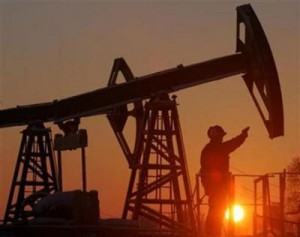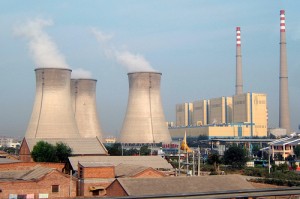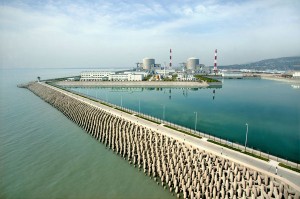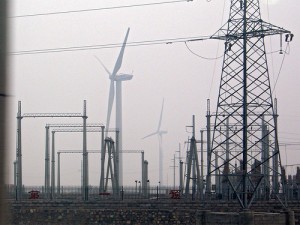China Sector Watch: Energy
 This is the second of a series that will take an in-depth look at the industries that are shaping Chinese economy today.
This is the second of a series that will take an in-depth look at the industries that are shaping Chinese economy today.
By Joyce Roque
Mar. 2 – Prior to Deng Xiaoping’s landmark market reforms, the country’s energy sector was fully-controlled by the state. Fast-forward 30 years and changes in China have been nothing short of revolutionary. The government has released its grip on the industry from total control to a decentralized one. It now serves more as the energy sector’s regulatory oversight rather dealing with the operational aspects of production.
The energy industry has been at the heart of China’s economic shift; making it possible for exports to thrive and propel the country out of poverty. Currently, even with the sector’s significance it still lags behind in terms of adopting efficient practices to make it safer and cleaner.
China is the largest emitter of greenhouse gas in the world and the leading renewable energy producer. The International Energy Agency says that China’s overall energy demand will grow by 3.2 percent per year between 2005 and 2030. Despite its significance as a top energy consumer, China has been unwilling to bow to international pressure to decrease emissions.
Cutting back on emission will not come easy for China. Even if the central government adopts a greener stance, local provincial chiefs have a tendency to disregard mandates coming from the central government for the sake of profit and growth. Many local chiefs even become co-owners of polluting factories. Add that to the fact that the global economic slowdown has deeply cut through energy demand as more than 4,000 factories close shop in Guangdong Province. The government has resorted to subsidizing losses made by the nation’s giant oil and electricity firms losing money because of decreasing demand.
China’s energy sector is divided into the following categories:
Coal
China takes the top spot as the largest consumer of coal with its consumption accounting for one fourth of world total. In Shanxi Province where most of the country’s coal is processed, pollution has even clouded its skies.
According to official data, China produced more than 2.7 billion tons of coal last year, double than any other country. While 40 percent of electricity generated in the world comes from coal, it is one of the most wasteful ways of producing energy. Even the most modern coal furnaces will only have around 35 percent thermodynamic efficiency thus more than 50 percent of generated heat is just released.
The production of coal in the country contributes to an estimated 70 percent of electricity supply and the government has made it clear that it will continue to depend on it as an energy source in the future.
 However, concern is growing over the health risks and environmental costs of coal mining. While the use of coal is prevalent, it is distinguished for having the most dismal history for coal mine safety. More than 4,000 miners die annually in coal mine explosions.
However, concern is growing over the health risks and environmental costs of coal mining. While the use of coal is prevalent, it is distinguished for having the most dismal history for coal mine safety. More than 4,000 miners die annually in coal mine explosions.
The deteriorating environment caused by coal use was highlighted when the National Population and Family Planning Commission said through China Daily that babies with physical defects are born every 30 seconds in China, and 10 percent of those incidents linked to pollution. This amounts to more than 1 million cases of babies born with birth defects annually.
The government is aware of this and trying to implement stricter environmental standards to stop the construction of coal-fired plants. For the economic stimulus plan, the Ministry of Environmental Protection said that huge projects for coal plants were rejected because their harmful environmental impact assessments.
Natural Gas
The Chinese government is aware as the country grows richer, its population will only continue to consume more and more energy. In 2008, the country’s gas output came in at 76 billion cubic meter, a 12.3 percent increase from 2007, according to the China Petroleum and Chemical Industry Association.
Within the country, Xinjiang Uygur Autonomous Region has the largest natural gas reserves amounting to a total of 1.4 trillion cubic meters. It accounts for more has an estimated natural gas reserve of 10.8 trillion cubic meters.
The subsidiary of China’s largest oil and gas producer China National Petroleum Corp., Xinjiang Oilfield Co., recently discovered an additional 138.4 billion cubic meter gas reserve in the southern rims and the center of Junggar Basin. The province’s Tarim Basin meanwhile is the nation’s biggest gas field producing more than 17 billion cubic meters of gas and proven gas reserves worth 1 trillion cubic meters.
Oil
To meet future demand and buffer itself from the effects of price fluctuations, Chinese companies have been encouraged by the government to secure supplies of resources abroad. The drive to secure supplies is so unflinching that it sometimes ignores the social ramifications to the countries it does business, like Sudan, garnering criticism abroad.
According to the National Energy Administration (NEA) nine refining bases in coastal areas will be build in the next three years. Three 30-million-ton refinery bases will be developed in Shanghai, Ningbo and Nanjing while another six 20-million-ton bases will be placed in coastal areas.
NEA also added that eight petroleum reserve bases will be finished by 2011 thus increasing crude reserve to 281 million barrels.
Recently, China signed oil for loans deals that provide funding to countries with oil fields but without the means to exploit them. The most recent are agreements with Brazil and Russia for financing in exchange for oil. Brazil will supply China 100,000 to 160,000 tons of oil a day while the China Development Bank provides them with US$10 billion loan payable in 10 years.
The same is true for its energy pact with Russia worth US$25 billion. Russia’s state-owned companies will supply China with oil taken from the East Siberian fields in the next twenty years in return for a US$25 billion financing deal with China Development Bank.
China has also inked a deal with Venezuela for an investment fund and recently increased investment to US$8 billion. The fund will be used to spearhead education, health and infrastructure programs in Venezuela. The most interesting part of the fund called for Venezuelan oil company PDVSA to sell between 350,000 to 1 million barrels daily to China’s National Oil Company by 2015 as payment.
The government’s economic stimulus plan worth RMB4 trillion will also affect how it secures its oil supplies for the future. China is looking to take advantage of the depressed global economy and lower gas prices. A fund will be set-up to use its massive foreign reserves to purchase gas and oil firms abroad. The state-owned firms- Petrochina, Sinopec and CNOOC –will benefit from this the most when they are allowed to avail of low-interest loans and in some cases maybe even direct financing.
Nuclear power
According to the World Nuclear Association, China is currently using eleven nuclear power reactors while seven remain under construction, and another ten about to start construction. This signals a huge change in China’s energy policy as it only developed less than 10 nuclear plants in the last 30 years. The government wants to lessen dependence on coal-powered plants and diversify its energy mix.
Coal processing is the main cause of China’s pollution troubles; costing an estimated 6 percent of its GDP according to the World Bank. Nuclear power in comparison is a more efficient and cleaner way to produce energy.
 China is also looking to move towards becoming self-sufficient in reactor design and construction. So far, it has had to mix nuclear technology imported from France, United States, Russia, and Canada. Another motivation for shifting to nuclear power is it will lessen the use of railways. The transport of coal from China’s north uses almost half the country’s rail capacity.
China is also looking to move towards becoming self-sufficient in reactor design and construction. So far, it has had to mix nuclear technology imported from France, United States, Russia, and Canada. Another motivation for shifting to nuclear power is it will lessen the use of railways. The transport of coal from China’s north uses almost half the country’s rail capacity.
By 2020, China is looking to build more reactors leading to a sixfold increase in nuclear capacity to at least 50 GWe or possibly to 60 GWe and an eventual increase to 120-160 GWe by 2030.
For its nuclear power program, China relies heavily on imported uranium to fuel its nuclear power program.The State Power Grid Corporation expects to supply 3810 billion kWh in 2010 from 850-900 GWe. Growth is then expected to slow to 2020, when capacity is expected to reach 1500 GWe. At the end of 2007 there was reported to be 145 GWe of hydro capacity, 554 GWe fossil fuel, 9 GWe nuclear and 4 GWe wind, total 713 GWe.
Nuclear power serves those provinces located in the country’s coastal areas to rely on another source of energy besides coal brought in from the north. This is a better option considering how coastal cities are the places that attract the highest amount of foreign investment while also being the places that use the most amount of electricity. In 2007, nuclear power sources provided 2.3 percent of total electricity used in the country or 62.86 billion kWh.
Building more nuclear energy plans also corresponds to the government goals to provide more jobs and improve domestic demand during the economic downturn as they will need purchases from the steel and metal industry. China’s largest nuclear company, the China National Nuclear Corp., has already signed agreements with domestic banks in billions of yuan to finance projects.
According to statistics, investment in nuclear and wind power investments rose by 71.85 percent and 88.10 percent last year. State-owned power companies were stepping up investment to meet growing demand and boost economic growth as part of a government stimulus plan, said Zhang Guobao, director of China’s National Energy Administration. He also called on ministers to ensure there were appropriate measures to raise and save energy as well as using it more efficiently.
Renewable Resources
Beyond the traditional sources of energy, China is also looking to tap into renewable resources. By March, China will begin constructing the region’s first 1.5-megawatt solar thermal power station in suburban Beijing.
 The China Academy of Sciences will design the solar thermal power station at an estimated cost of RMB100 million with the capacity to provide electricity for 30,000 homes next year. According to China Daily, the plant will be able to generate up to 2.7 million kWh of electricity annually or an equivalent value of cutting to eliminating 2,300 tons of CO2 emissions from conventional power plants.
The China Academy of Sciences will design the solar thermal power station at an estimated cost of RMB100 million with the capacity to provide electricity for 30,000 homes next year. According to China Daily, the plant will be able to generate up to 2.7 million kWh of electricity annually or an equivalent value of cutting to eliminating 2,300 tons of CO2 emissions from conventional power plants.
The country’s economic stimulus plan will also be seen at work here when the industry plans to employ workers laid-off by the downturn to be employed at renewable energy projects.
According to a report by Bharat Book Bureau, in 2008, the additional installed capacity of wind power in China was 6.3 GW and the total installed capacity reached 12.2 GW. The total installed capacity of wind power in China in 2010 will be the second largest in the world, to eventually reach 30 GW in 2020.
In Qinghai and Yunnan, construction will begin on huge solar power plant projects. The Qinghai project, a gigawatt-level solar station, could become the world’s biggest when finished.
Electric power
Five provinces will invest more than RMB10 billion each this year to improve local power grids with funding being taken out of China’s economic stimulus package. All in all, the Chinese government plans to invest roughly US$118 billion on upgrading the country’s power grids in 2009. Inner Mongolia Autonomous Region will invest about US$1.46 billion while Liaoning Province will spend an estimated US$2.92 billion. Fujian, Gansu and Guizhou provinces will put in US$1.75 billion, US$1.46 billion and US$1.52 billion for power grid upgrades.
Overall, China is making good its promise to use the country’s stimulus package to spur economic growth and improve infrastructure. Despite the slowing economy, China is wise to invest on the country’s long-term prospects by making the financial crisis a motivator to expedite the much needed infrastructure reforms.
- Previous Article China to Release Details of Stimulus Package
- Next Article China in Asia: Mar. 3























